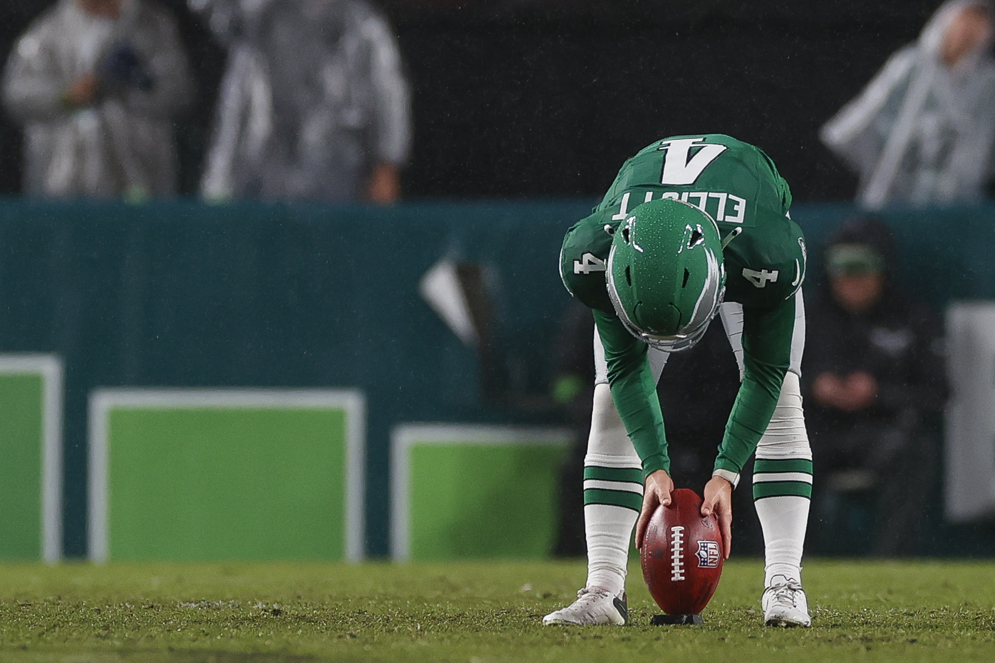NFL clubs have approved a rule making permanent the new form of free kick play (referred to as the Dynamic Kickoff) first implemented in 2024, with the following changes:
- Modify the alignment requirements for receiving team players in the setup zone
- Change the dead ball spot after a touchback to the 35-yard line if the ball lands in the end zone and is downed in the end zone by the receiving team or goes out of bounds behind the receiving team’s goal line
- Allow teams to declare an onside kick at any point in the game if they are trailing, instead just during the fourth quarter
The Dynamic Kickoff is designed to:
- Resemble a typical scrimmage play by aligning players on both teams closer together and restricting movement to reduce space and speed.
- Promote more returns.
Dynamic Kickoff Details
KICKER'S RESTRAINING LINES
- The ball is kicked from the A35 yard line unless adjusted by penalty (same as current rule)
- Safety kicks would be from A20 yard line (same as current rule)
ALIGNMENT
- All kicking team players other than the kicker will line up with their front foot on the receiving team’s B40 yard line
- Kicker cannot cross the vicinity of the 50-yard line until ball touches the ground or player in landing zone or end zone
- The 10 kicking team players cannot move until the ball hits the ground or player in the landing zone or the end zone
- The receiving team will line up as follows:
- Setup Zone – a 5-yard area from the B35 to the B30 yard line where at least 9 receiving team players must line up
- At least 6 players with front foot on the B35 yard line (restraining line) with alignment requirements (outside numbers, numbers to hashes, and inside hashes)
- The receiving team may have a maximum of three players in the setup zone not on the restraining line, but never more than one player in each of the three areas within the setup zone bordered by the sidelines and inbounds lines
- All players in the setup zone cannot move until the kick has hit the ground or a player in the landing zone or the end zone
- A maximum of 2 returners may line up in the landing zone and can move at any time prior to, or during, the kick
- Setup Zone – a 5-yard area from the B35 to the B30 yard line where at least 9 receiving team players must line up
LANDING ZONE
- Landing zone is the area between the receiving team’s goal line and its 20-yard line.
- Any kick that hits short of the landing zone – treated like kickoff out of bounds and ball spotted at B40 yard line; play would be blown dead as soon as kick lands short of the landing zone
- Any kick that hits and remains in the landing zone – must be returned
- Any kick that hits in the landing zone and then goes into the end zone – must be returned or downed by receiving team – if downed then touchback to B20 yard line
- Kick hits in end zone, stays inbounds - returned or downed – if downed then touchback to B35 yard line
- Any kick that goes out of the back of the end zone (in the air or bounces) – touchback to B35 yard line
MISCELLANEOUS
- If conditions cause ball to fall off tee twice, then the kicking team must kick the ball off the tee with a use of a designated holder.
- Onside kick:
- At any time during the game, the team trailing has the opportunity to declare an onside kick to the officials.
- Current onside kickoff rules would apply. If onside kick goes beyond the setup zone untouched, kicking team penalized for UNS; return team would start the drive at the A20 yard line.
- Penalties:
- The setup zone and landing zone will not change with any penalties that carry over to kickoffs. Alignment of 10 kickoff team players and all receiving team players would not change – only the spot of the kick would move
- Penalties on scoring plays will not carry over and will be taken on the Try
- Penalties on the Try may carry over, and if they do, only the placement of the kicker will change
- Safety Kick:
- The kick will be from the 20-yard line, and the kicker will have the option to use a tee; the setup zone and the landing zone will not change
Coaches Roundtable: The Dynamic Kickoff

NFL Executive Vice President of Football Operations, Troy Vincent Sr. hosted a roundtable discussion with Darren Rizzi (New Orleans Saints Assistant Head Coach and Special Teams Coordinator), John Fassel (Indianapolis Colts Special Teams Coordinator) and Richard Hightower (Chicago Bears Special Teams Coordinator) to talk about changes to the new permanent form of the rule, how teams are preparing for it ahead of the 2025 season, and what fans can expect from these changes in the upcoming season.



